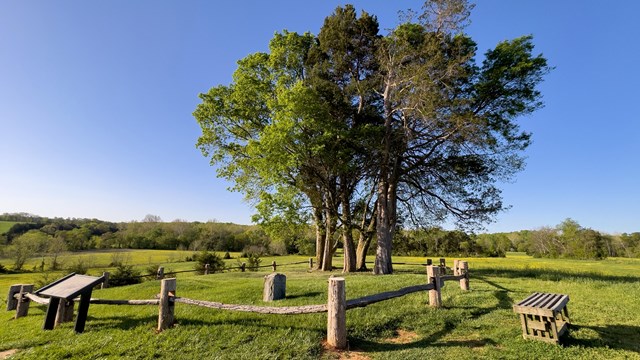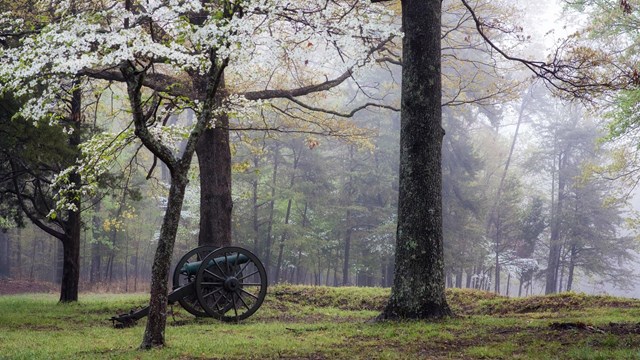
NPS Photo
Image Gallery
HistoryBeginningsEllwood was a prosperous, antebellum slave plantation. Perched on a knoll overlooking Wilderness Run, Ellwood stood at the center of an extensive 5,000-acre tract of land that encompassed much of what in 1864 would become the Wilderness battlefield. William Jones oversaw the construction of the present building, Ellwood, about 1790. He or his descendants owned Ellwood for the next century. The Jones-Lacy clan was one of the most prominent families in western Spotsylvania County. The Civil WarIn 1857, the Lacys purchased Chatham, in southern Stafford, and the family used Ellwood as a summer home, preferring the more palatial Chatham (now park headquarters) as their primary residence. J. Horace Lacy was an ardent defender of slavery and secession. After the outbreak of the Civil War, Lacy evacuated his family from the region, while he took a position in the Confederate army. While the Lacys fled at the approach of the Union army, the region’s enslaved population, including those at Ellwood, fled toward the Union army. By 1863, slavery had functionally ended at Ellwood. PostwarThe war marked a decisive transition for Ellwood. With Ellwood’s enslaved population free and Lacy’s personal wealth diminished, there was little to distinguish Ellwood from dozens of middling farms throughout Virginia. In 1872, the Lacys moved once again into Ellwood full time. In 1873, the press proclaimed Lacy the “White Man’s Candidate” when he ran for the state legislature. He won and served one term in Richmond. For the rest of his life he was an ardent proponent of the Confederacy and its Lost Cause, often making speeches defending Confederates. In 1977, Ellwood came into public ownership as part of Fredericksburg and Spotsylvania National Military Park. 
Ellwood Cultural Landscape Report
Take a deep dive into the history of Ellwood and download the Ellwood Cultural Landscape Report. 
Ellwood Walking Tour
Explore the history of Ellwood from its use as a slave plantation to a symbol of the Lost Cause. 
Wilderness Battlefield
The clash of US and Confederate forces in the Wilderness in the spring of 1864 marked the beginning of General Grant's Overland Campaign. |
Last updated: December 15, 2024
